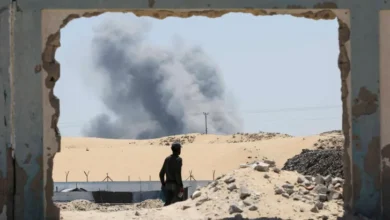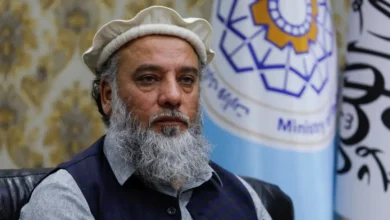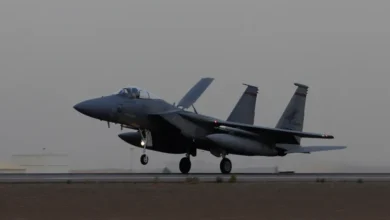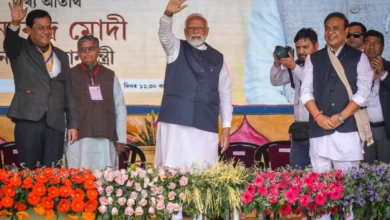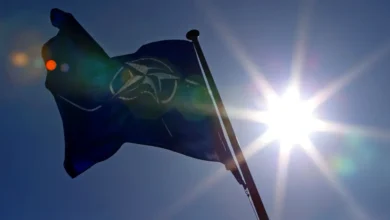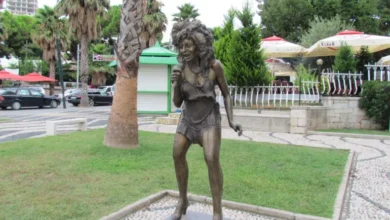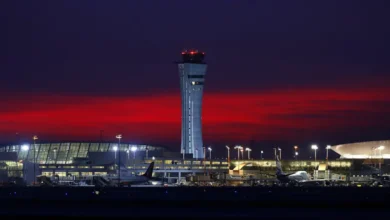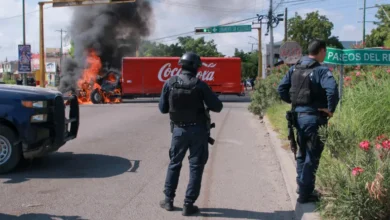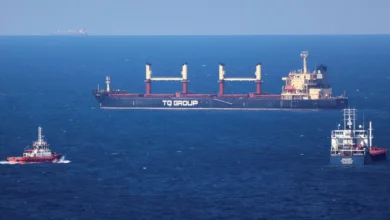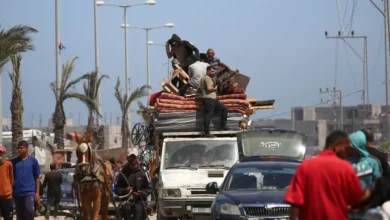Russia attacks east Ukraine as milestone nears; Kyiv seeks arms

Russia appeared to make marginal territorial gains in Ukraine’s eastern regions during the 50th week of the war, as it threw new recruits into the front lines to probe defences with widely dispersed attacks, sometimes with devastating casualties for its troops.
“We’ve observed that the Russian occupation forces are redeploying additional assault groups, units, weapons, and military equipment to the east,” Ukrainian military intelligence representative Andriy Chernyak told the Kyiv Post on February 1.
Their orders were to capture the remaining parts of Luhansk and Donetsk provinces, known as the Donbas, by March, Chernyak said.
Ukrainian presidential office adviser Mykhailo Podolyak said there were about 100 combat clashes a day along the entire front line.
Ukrainian troops appeared to have lost ground at the northern end of the 800km (500-mile) front, in Kharkiv – ground they had won back in a sweeping counteroffensive last September – where Russian forces claimed to have captured the settlements of Synkivka and Dvorchine.
Further south, Russian forces carried out a record number of artillery strikes from Kreminna in the direction of Lyman, Ukraine’s eastern forces spokesman said on February 3. A series of offensives followed, in which Russian military reporters claimed their country’s forces had pushed as far as Yampolivka, 16km (10 miles) west of Kreminna.
Fierce fighting continued to rage through the week in Bakhmut, a town at the centre of the eastern front which Russian forces have been trying to capture since last summer.
A Ukrainian commander told a Western reporter its defenders could hold out for “one or two more months”.
Michael Kofman, director of Russia studies at the Center for Naval Analyses, a research organisation, wrote that the situation around Bakhmut “increasingly looks precarious for the Ukrainian Army, and I wouldn’t be surprised if they ultimately withdraw from the city”.
“I’ve often had to say the situation at the front is tough and is getting tougher, and it’s that time again,” Ukrainian President Volodymyr Zelenskyy said on February 4 in a nightly video address.
But the fiercest fighting took place at the southern end of the front, where Russian forces reportedly committed six battalion tactical groups to Vuhledar, a coal-mining town in the Donetsk region, throwing Ukrainian fighters onto the defensive.
A three-day battle for Vuhledar culminated on February 6, when Ukraine’s military reported it had killed more than 1,000 Russian soldiers in a day, and destroyed 14 tanks and 28 armoured personnel carriers – an extraordinary toll. According to a Ukrainian reserves officer, some 30 of those vehicles were damaged or destroyed in the Vuhledar area.
More tanks, faster
Sensing the urgency of the situation, Ukraine’s allies, which had held back promises of battle tanks until late January, were feverishly preparing the vehicles for combat and pledging more.
The first of four Canadian Leopard 2A4 tanks have arrived in Poland.
Germany, which had delayed announcing its first batch of 14 Leopard 2A4 tanks, additionally pledged 100 Leopard 1A5 tanks, bringing the total tanks allies have promised this year to 223.
Pledges from Portugal, Norway and Spain to deliver about two dozen tanks were understood to be pending, while Germany may yet provide more. Other Baltic and North Seas countries were said to be pondering pledges. Ukraine has requested at least 300 tanks to liberate its territories.
US President Joe Biden announced a $2.2bn military aid package, including artillery rockets, howitzer and mortar shells, Javelin anti-tank systems, air defences, heavy machineguns and mine-resistant vehicles.
Norway pledged $730m in military and humanitarian assistance to Ukraine over five years, spending some of its windfall oil and gas profits occasioned by the war.
Ukraine was even reported to be importing mortar bombs from Azerbaijan in an ever-widening effort to obtain the ammunition it needs.
Switzerland’s parliament is reviewing the country’s tradition of neutrality, which goes back to the Napoleonic Wars. An arms manufacturer, Switzerland has been under increasing pressure from Western allies to allow its weapons to be given to Ukraine.
“We shouldn’t have the veto to stop others [from] helping Ukraine. If we do that, we support Russia, which is not a neutral position,” FDP party leader Thierry Burkert told the Reuters news service.
During a rare trip abroad on February 8, Zelenskyy told a full session of the British Parliament why not only tanks but fighter jets would be of paramount importance for Ukraine’s defence in the coming months.
“In Britain, the king is an air force pilot, and in Ukraine, every air force pilot is a king,” he said. “I will be leaving Parliament today thanking all of you in advance for powerful English planes.”
Time is of the essence
Ukraine is not expected to field any of the new tanks until late March.
Defence Minister Oleksiy Reznikov believes that will leave Ukraine to face a new Russian onslaught with what it has got for at least a month.
“Given that Russians live in symbolism, they will try something around February 24,” he said.
Others believe the incursion will come sooner – mid-February, says the governor of the Luhansk region, Serhiy Haidai.
“We are seeing more and more [Russian] reserves being deployed in our direction, we are seeing more equipment being brought in … They bring ammunition that is used differently than before – it is not round-the-clock shelling any more. They are slowly starting to save, getting ready for a full-scale offensive,” Haidai told Ukrainian television.

